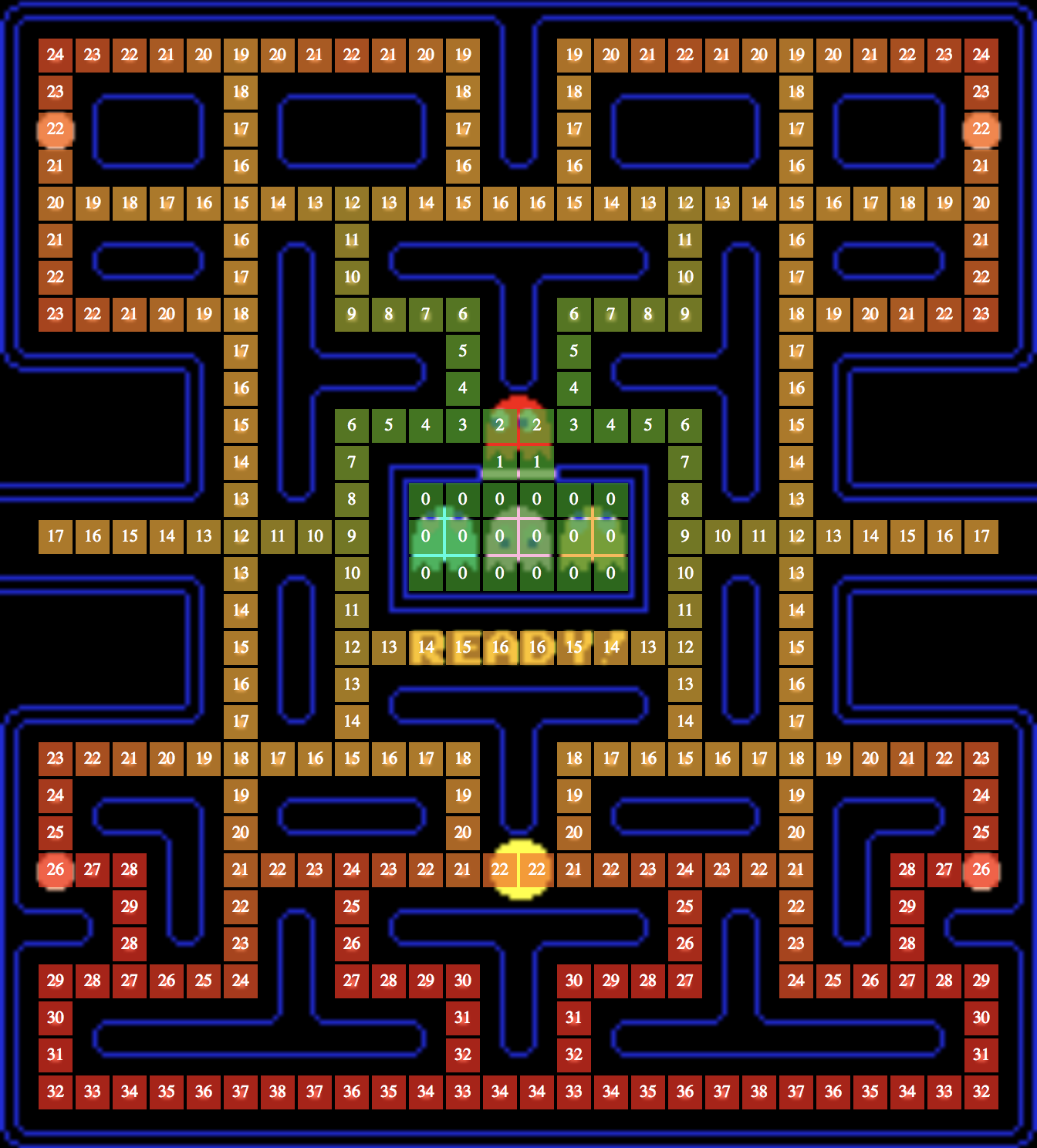My approach is a little memory intensive (from the perspective of Pacman era), but you only need to compute once and it works for any level design (including jumps).
Label Nodes Once
When you first load a level, label all the monster lair nodes 0 (representing the distance from the lair). Proceed outward labelling connected nodes 1, nodes connected to them 2, and so on, until all nodes are labelled. (note: this even works if the lair has multiple entrances)
I'm assuming you already have objects representing each node and connections to their neighbours. Pseudo code might look something like this:
public void fillMap(List<Node> nodes) { // call passing lairNodes
int i = 0;
while(nodes.count > 0) {
// Label with distance from lair
nodes.labelAll(i++);
// Find connected unlabelled nodes
nodes = nodes
.flatMap(n -> n.neighbours)
.filter(!n.isDistanceAssigned());
}
}
![Flood-fill out from lair]()
Eyes Move to Neighbour with Lowest Distance Label
Once all the nodes are labelled, routing the eyes is trivial... just pick the neighbouring node with the lowest distance label (note: if multiple nodes have equal distance, it doesn't matter which is picked). Pseudo code:
public Node moveEyes(final Node current) {
return current.neighbours.min((n1, n2) -> n1.distance - n2.distance);
}
Fully Labelled Example
![Complete map]()


